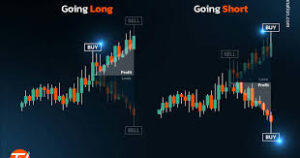Credit Default Swap – Everything You Need To Know

Credit Default Swaps (CDS) are powerful financial tools that act like insurance for loans, protecting lenders from the risk of default. Originating in the late 1990s, these contracts have become essential for managing credit risk, influencing both corporate and government debt markets. Let’s dive into the mechanics, roles, and valuation of CDS to understand their impact on modern finance. Gain clarity on Credit Default Swaps with educational support from https://bitcoin-synergy.io/, facilitating a deeper understanding of this financial instrument’s mechanics.
Introduction to Credit Default Swaps (CDS)

Credit Default Swaps (CDS) are like insurance for loans. Imagine you’ve lent someone money and you’re worried they might not pay you back. A CDS helps protect you from that risk. These financial agreements started gaining popularity in the late 1990s, offering a way for lenders to manage their exposure to default risk.
A CDS contract involves two parties: the protection buyer and the protection seller. The buyer pays a regular fee to the seller, similar to paying an insurance premium. In return, if the borrower (known as the reference entity) defaults on their debt, the seller compensates the buyer. This compensation covers the loss from the default, making CDS a handy tool for managing risk.
Over time, CDS became more sophisticated, spreading beyond just corporate debt to include government bonds and other types of credit. They played a notable role in the financial world, especially during the 2008 financial crisis. The crisis highlighted both the benefits and the dangers of these instruments.
While CDS can provide protection, they can also be used for speculation. Some investors buy CDS without owning the underlying debt, betting on the likelihood of default. This speculative use adds complexity to the market.
Structure and Components of a CDS Contract
A Credit Default Swap (CDS) contract might sound complex, but its structure is fairly straightforward. At its core, a CDS is an agreement between two parties: the protection buyer and the protection seller. Let’s break down the key components that make up this contract.
First, there’s the reference entity. This is the borrower whose credit risk is being insured. It could be a corporation, a government, or any other entity that issues debt. The reference entity’s creditworthiness is central to the CDS.
Next, we have the notional amount. This is the face value of the debt being insured. For instance, if the reference entity has issued a bond worth $1 million, the notional amount of the CDS would also be $1 million.
The premium, or spread, is another critical element. This is the fee the protection buyer pays to the seller. It’s usually expressed as a percentage of the notional amount and is paid periodically, often quarterly. Think of it as the insurance premium in this financial arrangement.
Then, there’s the credit event. This term defines what constitutes a default. It could be a missed interest payment, a bankruptcy filing, or another event that indicates the reference entity is in trouble. The specific conditions are clearly outlined in the CDS contract.
Role of the Protection Buyer and Protection Seller
In a Credit Default Swap (CDS) contract, the protection buyer and protection seller play distinct yet complementary roles. Understanding these roles is key to grasping how CDS contracts function.
The protection buyer is essentially the party seeking insurance against the risk of default. They may hold debt issued by a reference entity and want to mitigate potential losses if that entity defaults. By purchasing a CDS, the buyer transfers the default risk to the protection seller. In exchange, the buyer pays regular premiums, much like paying for an insurance policy. This setup allows the buyer to manage their risk exposure more effectively.
On the other hand, the protection seller acts as the insurer in this arrangement. They agree to compensate the buyer if a credit event, such as a default, occurs. In return for taking on this risk, the seller receives periodic premiums. Protection sellers can range from banks to hedge funds, and they typically analyze the creditworthiness of the reference entity before entering into a CDS contract. Their willingness to sell protection indicates their confidence in the entity’s stability or their strategic position to manage potential risks.
The interaction between the buyer and seller creates a dynamic risk management tool. For the buyer, a CDS provides a safety net, reducing the financial impact of a default. For the seller, it offers an opportunity to earn returns by assuming and managing risk. However, this relationship also introduces complexities. If a credit event happens, the seller must have the financial capability to cover the losses, making their role critical in maintaining market stability.
CDS Pricing and Valuation Methods
Pricing a Credit Default Swap (CDS) involves several factors and requires a good understanding of both market conditions and the creditworthiness of the reference entity. Let’s explore how CDS pricing and valuation work.
The premium, or spread, that the protection buyer pays to the seller is a primary component of CDS pricing. This spread is influenced by the perceived risk of the reference entity defaulting. Higher risk entities command higher spreads, reflecting the greater likelihood of a credit event.
To determine the appropriate spread, market participants use various valuation models. One common approach is the probability model, which estimates the likelihood of default over the contract’s life. This involves analyzing the reference entity’s credit rating, financial health, and market conditions. Historical default rates and current economic indicators also play a role in this assessment.
Another crucial factor in CDS pricing is the recovery rate. This is the percentage of the notional amount that can be recovered if the reference entity defaults. For example, if a $1 million bond has a recovery rate of 40%, the expected loss in a default would be $600,000. The lower the recovery rate, the higher the CDS spread, as the potential loss is greater.
The present value of future premiums and potential default payments also affects CDS valuation. Discounting these cash flows to their present value provides a clearer picture of the contract’s worth. This calculation often uses the risk-free interest rate, such as government bond yields, to discount future payments.
Conclusion
In essence, Credit Default Swaps provide crucial protection against credit risk, offering lenders peace of mind and market stability. By understanding their structure, roles, and pricing, we can appreciate the significant role CDS play in today’s financial landscape. As the market evolves, staying informed about CDS is vital for anyone involved in finance or investing.







